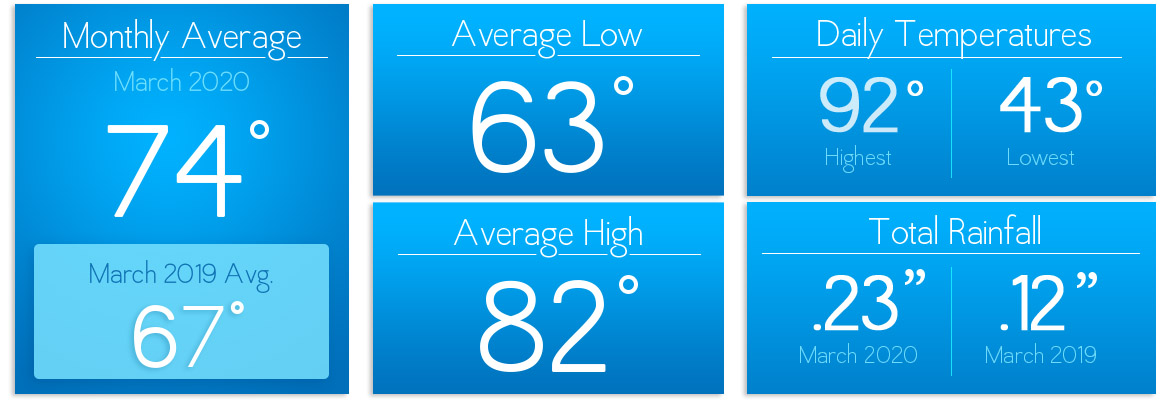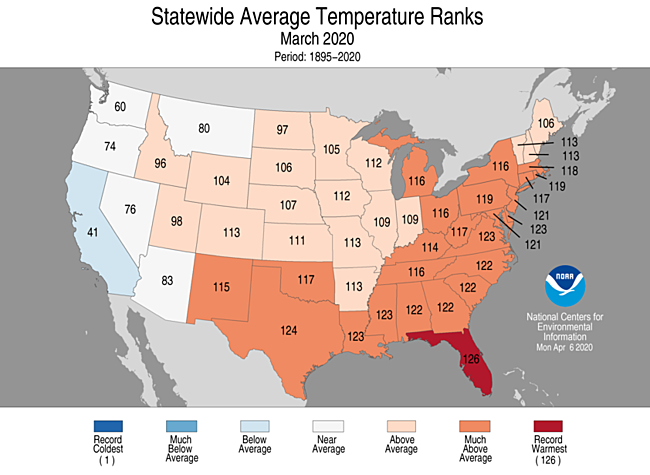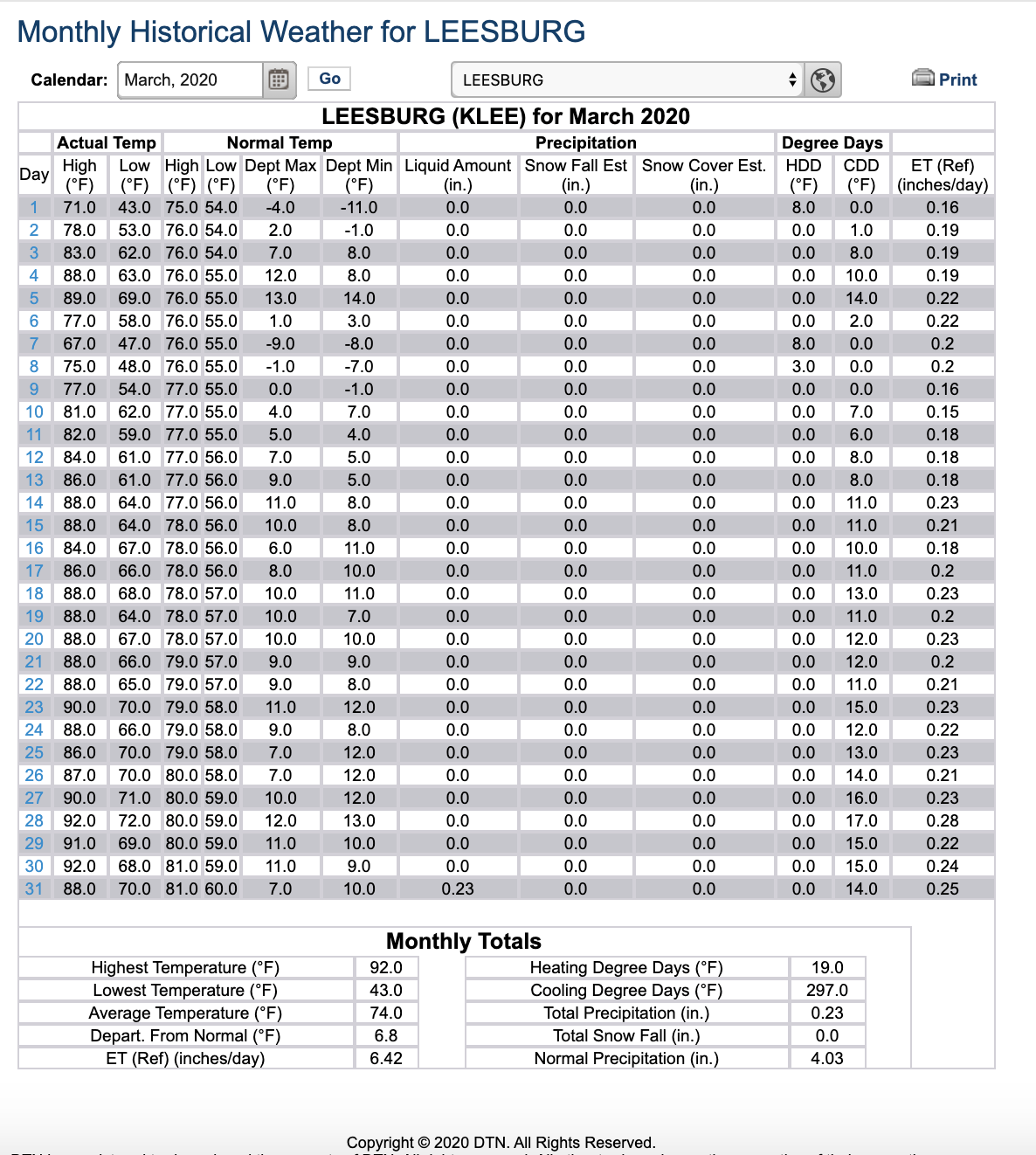Sunshine State Stats March 2020
March was a very warm month for Central Florida. The average temperature was 74 degrees – 6.8 degrees warmer than the average March temperature. The lows dipped down to 43 degrees early in the month and later the high peaked at 92 degrees. This 49-degree temperature swing would have potentially called for both heating and cooling in the same month.

The average high temperature was 82 degrees in March 2020 compared to 77 degrees in 2019, while the average low temperature was 63 degrees in 2020 versus 56 degrees during March 2019.
Not only was it a warmer March than normal, it was also drier. March typically produces a little over 4 inches of precipitation, but 2020 provided less than a quarter of an inch.

March weather was far from the norm as was the entire month with multiple federal, state, and county executive orders closing stores, restaurants, beaches and amusement parks due to the COVID-19 pandemic. Many of the social distancing recommendations made by the CDC were implemented by businesses in the public and private sector. This will have an impact on electric use due to families being home more throughout the day.
To help keep costs down, SECO Energy recommends keeping your air conditioning thermostat at 78-80 degrees during the day when home and raising the thermostat 2-3 degrees when leaving for four hours or longer. The warmer temperatures in March will most likely cause an increase in consumption compared to previous March bills. If you haven’t already, consider scheduling your annual HVAC service to ensure the air conditioner is in prime operating condition heading into the warmer months.
April 2020 forecast:
April temperatures normally average 71.1 degrees with precipitation averaging just over half of an inch for the month. Will we continue this warmer than average trend for the month of April? We will see. Until then, have a wonderful and blessed April!
To check historical usage, log into SmartHub to view past bills and consumption charts. If your usage is high, SECO offers several energy-efficiency tools to help you identify energy wasters. Take the Home Energy Assessment to receive a detailed email tailored to your home’s features and lifestyle. The energy-saving advice will provide low-cost ways to decrease your usage – and your electric bill.
To easily calculate how much energy your appliances, lighting, electronic devices, and other energy-using items in your home consume, use the Energy Estimator.







